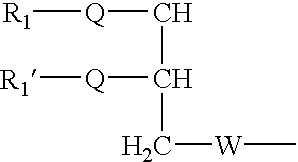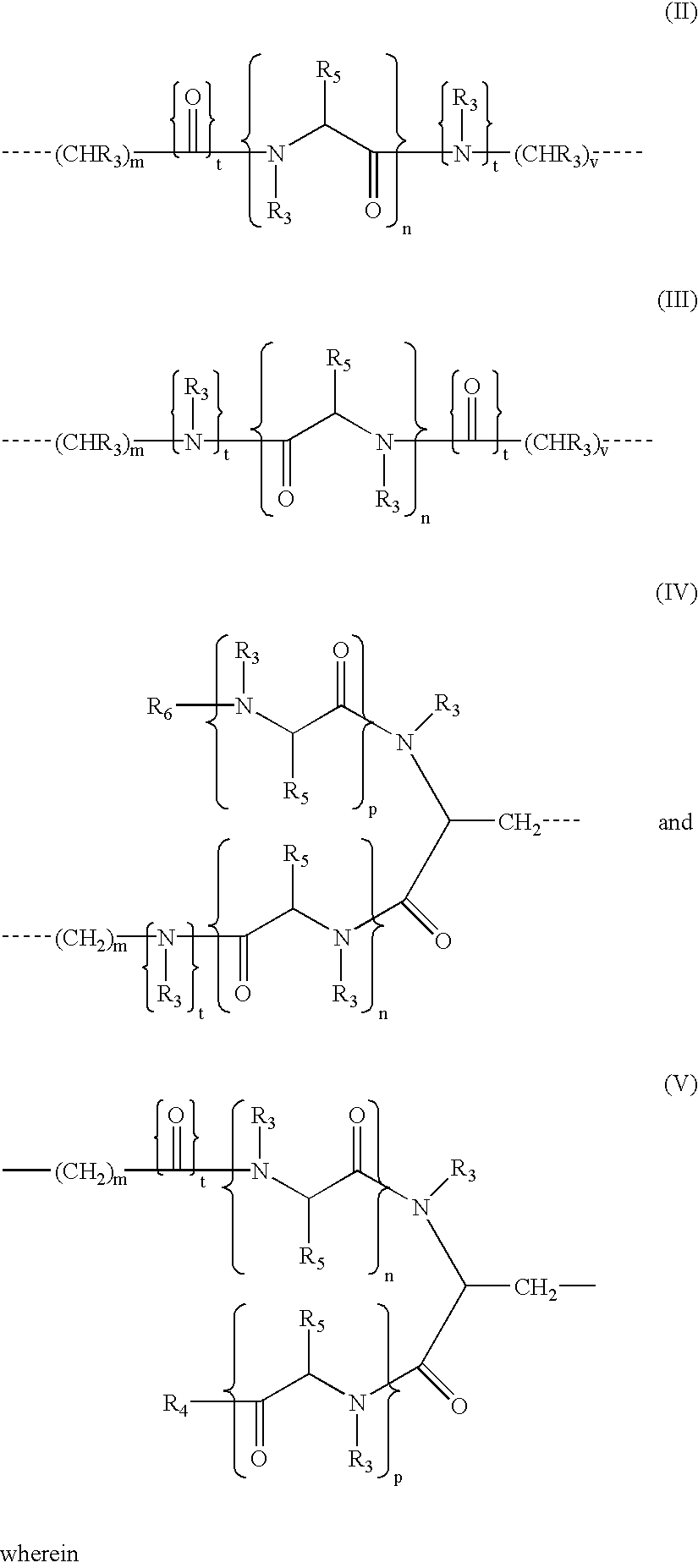Fusogenic lipids and vesicles
a technology of lipids and vesicles, applied in the direction of biocide, phosphatide foodstuff composition, aerosol delivery, etc., can solve the problems of insufficient amount of pharmaceutical agents ever becoming present in the cellular cytoplasm or nucleus, formation of aggregates that are too large to enter cells, and degraded and/or expelled
- Summary
- Abstract
- Description
- Claims
- Application Information
AI Technical Summary
Benefits of technology
Problems solved by technology
Method used
Image
Examples
example 2
Synthesis of Cholesterol-Ethylamidinopropyl-Pyridyldisulfide
[0099] 13
[0100] Pure cholesterol-ethylenediamine (10 mmol) was dissolved in 300 mL of DCM. 100 mmol of 2,2'-dipyridyl disulfide was dissolved in 100 mL of methanol and added to the cholesterol-ethylenediamine solution plus 20 mmol of diisopropylethylamine. 15 mmol of 2-iminothiolane was dissolved in 50 mL of methanol and then drop-wise added to the cholesterol-ethylenediamine / 2,2'-dipyridyldisulfide solution over 30 minutes at R.T. Following an overnight R.T. stir, organic solvent was roto-evaporated away using medium vacuum until a minimal sample volume remained. Approximately 800 mL of acetonitrile was added to precipitate the crude product. The solid was then collected by filtration onto a Whatman #5 filter apparatus, rinsed several times with acetonitrile and then air-dried. The crude solid was dissolved in a minimal volume of chloroform and chromatographically purified using a silica column. The purified product presen...
example 3
Synthesis of CHETA
[0101] 14
[0102] Cholesterol-ethylamidinopropylpyridyl-disulfide (10 mmol) was dissolved in 200 mL of chloroform. 10 mmol of mercaptoacetic acid was diluted into 20 mL of chloroform plus 50 mmol of diisopropylethylamine. While stirring, the mercaptoacetic acid solution was drop-wise added to the cholesterol-ethylamidinopropylpyridyldisulfide solution over a 1 hour period at R.T followed by an additional 2 h R.T. stir. The organic solvent was roto-evaporated away using medium vacuum until a minimal sample volume remained. Approximately 800 mL of acetonitrile was added to precipitate the crude product. The solid was then collected by filtration onto a Whatman #5 filter apparatus, rinsed several times with acetonitrile and then air-dried. The crude solid was dissolved in a minimal volume of chloroform and chromatographically purified using a silica column. The purified product presented a single TLC spot (4:1 chloroform / methanol), and a single peak (parent ion M+H=665)...
example 4
Synthesis of CHETSu
[0103] 15
[0104] Cholesterol-ethylamidinopropylpyridyl-disulfide (10 mmol) was dissolved in 200 mL of chloroform. 10 mmol of mercaptosuccinic acid was diluted into 20 mL of chloroform plus 50 mmol of diisopropylethylamine. While stirring, the mercaptoacetic acid solution was drop-wise added to the cholesterol-ethylamidinopropylpyridyldisulfide solution over a 1 h period at R.T. followed by an additional 2 h R.T. stir. The organic solvent was roto-evaporate away using medium vacuum until a minimal sample volume remained. Approximately 800 mL of acetonitrile was added to precipitate the crude product. The solid was then collected by filtration onto a Whatman #5 filter apparatus, rinsed several times with acetonitrile and then air-dried. The crude solid was dissolved in a minimal volume of chloroform and chromatographically purified using a silica column. The purified product presented a single TLC spot (4:1 chloroform / methanol), and a single peak (parent ion M-H=722)...
PUM
| Property | Measurement | Unit |
|---|---|---|
| size | aaaaa | aaaaa |
| size | aaaaa | aaaaa |
| size | aaaaa | aaaaa |
Abstract
Description
Claims
Application Information
 Login to View More
Login to View More - R&D
- Intellectual Property
- Life Sciences
- Materials
- Tech Scout
- Unparalleled Data Quality
- Higher Quality Content
- 60% Fewer Hallucinations
Browse by: Latest US Patents, China's latest patents, Technical Efficacy Thesaurus, Application Domain, Technology Topic, Popular Technical Reports.
© 2025 PatSnap. All rights reserved.Legal|Privacy policy|Modern Slavery Act Transparency Statement|Sitemap|About US| Contact US: help@patsnap.com



